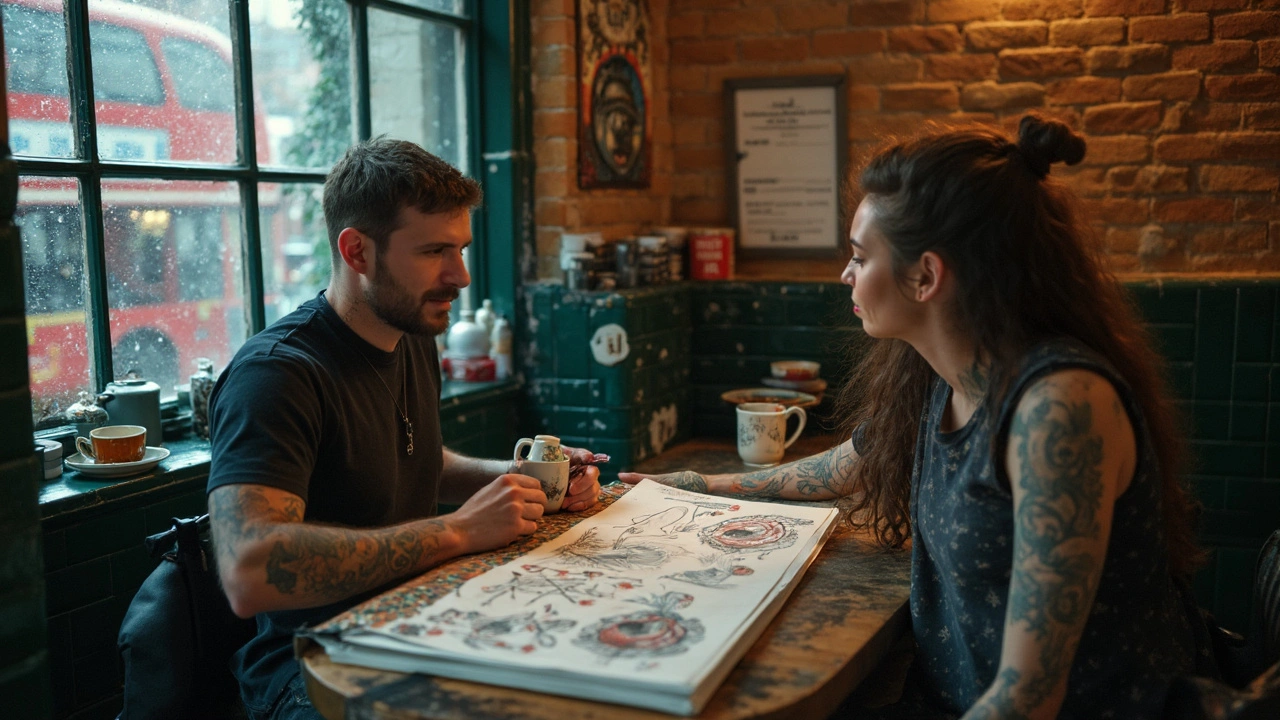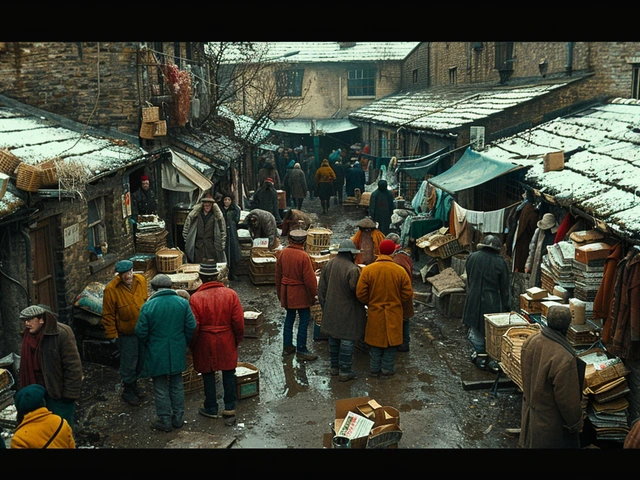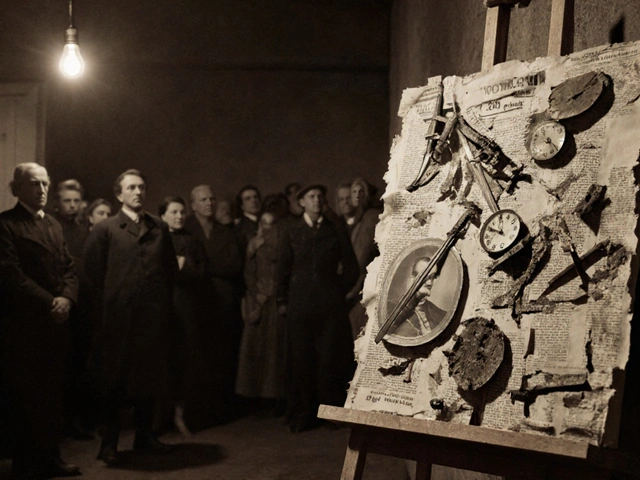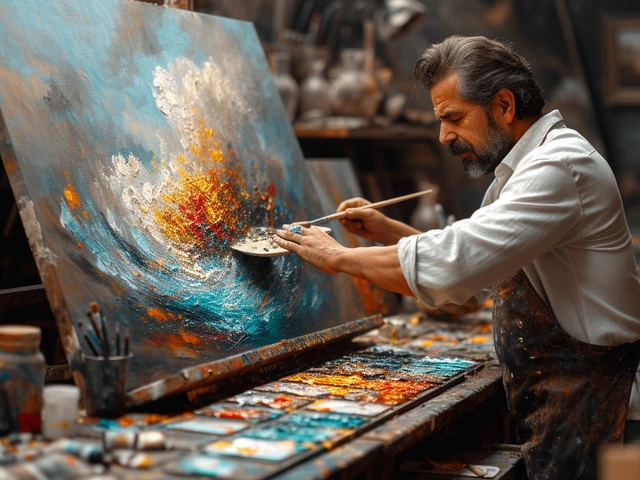You clicked because you want the beauty and drama of Art Nouveau on skin-those flowing curves, floral halos, and romantic portraits-but you also want it to age well, suit your body, and be worth the hours under the needle. Here’s what this style does best, what it won’t do, and how to plan a piece you’ll still love in 2035. I’m writing from Sydney, where the sun is rude and the colors get tested, so expect practical advice on line weight, placement, and aftercare in 2025.
TL;DR: Key Takeaways
- Art Nouveau tattoos lean on “whiplash” curves, stylized botanicals (iris, lily, peacock), and romantic portraits. Think Alphonse Mucha posters translated to anatomy.
- Place the big curves along muscle flows: forearm sweep, side ribs, outer thigh, upper back. Curves that fight your anatomy will look stiff and age worse.
- Keep line weight honest. Super-thin single-needle can blur in a few years. Build a hierarchy: bold outer contours, medium interior lines, light details.
- Color loves shade. Pastels and olive greens fade faster in harsh sun. In Australia, plan for SPF 50+ or shift to an earthier palette that ages better.
- Pick an artist who studies Mucha, Beardsley, and Guimard. Look for confident S-curves, clean negative space, and healed photos-not just fresh ink glam shots.
How to Design and Plan an Art Nouveau Tattoo
Job: Understand the style, then map it to your body and lifestyle without losing the soul of the art.
What makes it Art Nouveau? The style peaked c.1890-1910, with Alphonse Mucha, Hector Guimard, and Aubrey Beardsley shaping its visual language. You’re looking at S-curves, organic lines, and a love of nature-iris and lilies, peacocks, dragonflies, flowing hair, halos, and decorative frames. Museums like the V&A, the Mucha Foundation, and The Met’s Timeline of Art History all point to the same DNA: ornament that obeys nature’s rhythms.
Here’s a simple blueprint that works in a tattoo studio today:
- Pick your anchor motif. One hero subject, not three. Example: a portrait in profile. Build from there-around her, add iris stems, a crescent halo, and a border frame. Keep a clear focal point.
- Map the curves to the body. Stand in a mirror and trace the largest S-curve with your hand along the planned area. On a forearm, it often runs from wrist outside to inner elbow. On a thigh, it starts high on the hip and pours down to the knee. If your main curve matches a muscle line, the piece will breathe when you move.
- Design in layers. Think poster logic: foreground (hero/portrait), midground (botanical stems and ribbons), background (soft color fields or simple pattern). This makes healing kinder and touch-ups easier.
- Set a line hierarchy. A rule of thumb I use: 120-140% line weight for outer silhouettes, 80-100% for interior structure, 40-60% for hair strands, pupils, lace. In needle speak, that might mean 7-9RL for contours, 5RL for structure, single or 3RL for the fine bits-adjusted to your artist’s setup.
- Choose a palette that lasts. Classic palettes include olive greens, muted golds, wine reds, and powder blues. In high-UV places like Sydney, push slightly deeper tones (sage, teal, burgundy) and keep pastels for small accents. Yellow and pale pink fade fast in the sun. Darker skin tones pop with gold, warm brown, and deep teal; keep contrast high.
- Frame, don’t fill. Nouveau loves decorative frames. Use them to end a tattoo cleanly rather than flooding the whole area with color. Clean edges age kinder than full-bleed color in high-friction spots.
- Right-size it. If you want a portrait with readable facial features, think palm size or bigger. If you want fine hair strands and lace, go larger. Art Nouveau gets sad when it’s tiny.
- Book the right artist. You want someone with healed photos of Nouveau work. The giveaways: confident long curves without jitter, consistent line weight, hair that feels like it’s moving, and negative space used on purpose. If their portfolio is mostly heavy blackwork or watercolor splashes, your piece may drift off-style.
Time and cost (2025, Sydney context): mid-career artists with strong decorative work are often AU$180-250/hour. Top-tier specialists hit $250-350+. A palm-sized framed piece can be 3-5 hours; a half-sleeve with a portrait might run 10-18 hours over a few sessions. Deposits are standard. If a quote is suspiciously cheap, ask why; quality linework and healed results demand time.
Placement notes I give clients (and yes, I’ve said this to my kids when they ask why Dad’s forearm piece still looks crisp): inner forearm and outer upper arm are friendly zones with less sun and slower wear. Ribs give huge flow for curves but hurt and stretch with breath. Outer thigh is a dream for S-curves, but jeans seams rub. Calves handle frames well. Hands and feet chew up fine detail-think bolder designs there.
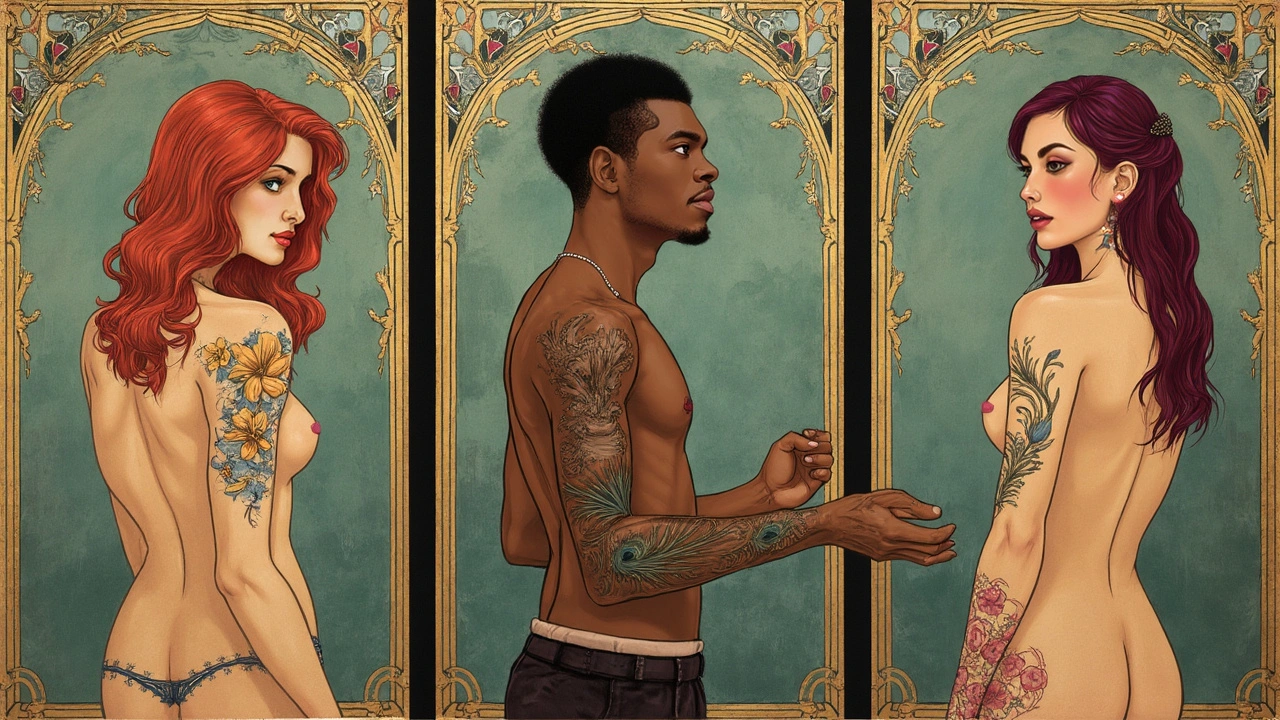
Examples and Motif Ideas That Actually Work
Job: See clear, workable ideas that hold style and age well.
Use these as launch pads. Each balances motif, flow, and aging.
- Portrait with iris frame (upper arm/shoulder): A profile with flowing hair, iris stems arcing like parentheses, a halo of soft gold behind the head, and a ribbon with a date or lyric. Keep facial features clean and minimal. Avoid tiny eyelashes; suggest them with shading.
- Dragonfly + peacock feathers (outer forearm): One long sweeping stem, a dragonfly perched mid-curve, two peacock eye-feathers fanning behind. Teal and deep green with a burgundy accent. The wings can be negative space with light stipple.
- Lily cascade (ribs or outer thigh): Three lilies at different stages-bud, bloom, opening. Ribbon forms the whiplash S-curve. Soft powder blue in the background for depth without solid fill. Works well as black and grey with a single color pop.
- Guimard doorway frame (back): No portrait, just an architectural frame inspired by Paris Métro entrances-those leaf-like brackets. Inside, a simple starry sky gradient. Elegant for people who prefer geometry over faces.
- Art Nouveau initials (sternum or spine): One letter, built from vine and ribbon, with a tiny moth perched on a serif. Keep the rest negative. It stays readable and personal.
- Hair as landscape (upper back): A woman’s hair morphs into waves and vines, ending in a roundel sun. Minimal color, mostly line with a sepia wash. Ages like a favorite print.
For darker skin tones, push contrast: outline in solid black, then shade with warm browns and deep jewel tones (teal, ruby). Metallic colors are an illusion-your artist mimics shine with highlights and negative space. For very fair skin prone to redness (hello, Sydney beach people), allow more space between lines so healed redness doesn’t crowd details.
Scale tests I use in consults:
- “3-1-0.3 test”: From 3 meters, the shape reads. From 1 meter, motifs read (lily, portrait). From 30 cm, the fine lace or hair strands read. If any layer fails, resize or simplify.
- Phone grayscale trick: Drop your design to black-and-white on your phone. If it dies, your contrast is too low. Nouveau thrives on clear darks next to breathy lights.
Two ideas that seem smart but backfire:
- “Watercolor wash only” Nouveau: Looks dreamy day one, turns hazy without line anchors. Keep at least a medium contour so the piece keeps its spine.
- “Micro-portrait with full hair detail”: The hair will blur. Turn strands into shapes and shadows. Your future self will thank you.
Checklists, Heuristics, and Pro Tips
Job: Make choices fast and avoid landmines.
Style checkpoints before you commit:
- Do you see an S-curve guiding the whole design?
- Is there a single clear focal point?
- Is line hierarchy obvious (thick outside, mid inside, thin detail)?
- Is negative space doing real work, not just empty leftovers?
- Does the palette fit your skin and sun life?
Artist portfolio red flags:
- No healed photos, only glossy fresh shots.
- Long curves that wobble or kink.
- Faces with fuzzy eyes or uneven symmetry.
- Botanicals that look botanical-ISH-petals without structure, random leaf veins.
Needle and line rules of thumb (talk to your artist; this is a guide, not gospel):
- Contour lines: 7-9RL for medium pieces; larger pieces can take 11RL for bold silhouette.
- Interior structure: 5RL keeps shapes clean without shouting.
- Fine detail: 3RL or single, but use sparingly and place where skin moves less.
- Shading: 7-9M or 11-13M soft magnums for gentle gradations common in Nouveau backgrounds.
Color strategy for 2025 inks:
- Ask about pigment alternatives if certain blues/greens are restricted by supplier policies. Reputable artists can show MSDS sheets.
- Pastels need protection. If you live at the beach, anchor with black or dark brown lines. Pastel-only Nouveau is a heartbreak in Sydney sun.
- For melanin-rich skin, choose saturated hues (teal, magenta, gold-brown) and strong highlights via negative space.
Placement cheat sheet:
- Inner forearm: safe for detail, medium sun exposure, easy to frame with bands and stems.
- Outer upper arm/shoulder cap: great for halos and roundels, low friction.
- Ribs/side: epic flow, high pain, breathing stretch-simplify fine lines here.
- Outer thigh/hip: big S-curves, clothing rub-keep long-term touch-ups in mind.
- Back: best canvas for architectural frames and portraits, but plan around bra lines or backpacks.
Budgeting guide (typical, 2025):
- Palm-size framed motif: 3-5 hours.
- Half-sleeve with portrait + botanicals: 10-18 hours over 2-4 sessions.
- Backpiece with architectural frame + figure: 20-40 hours.
Aftercare for crisp Nouveau lines:
- First 24-48 hours: leave on the medical film your artist applies, unless directed otherwise. Then wash with lukewarm water and an unscented cleanser.
- Moisturize thinly, 2-3 times daily. No heavy ointment that suffocates lines.
- No ocean, pool, or baths for at least 2 weeks. Showers are fine.
- Sun is the enemy. Once healed, daily SPF 50+ on exposed pieces. In Sydney, even winter sun is loud.
- Touch-ups: plan for one within the first year if you have lots of fine hairlines or pale color fields.
Quick comparison: is it really Art Nouveau, or are you after something else?
| Style | Motifs | Line & Flow | Palette | Best For | Watch-outs |
|---|---|---|---|---|---|
| Art Nouveau tattoos | Florals, female figures, peacock, dragonfly, frames | S-curves, whiplash, organic | Muted jewel tones, sepia, soft pastels | Romantic, decorative, body-flow pieces | Too-tiny detail, sun fade on pastels |
| Art Deco | Sunbursts, fan shapes, geometry | Straight lines, symmetry | Gold, black, bold contrast | Structured, architectural looks | Can look rigid on curvy anatomy |
| Neo-traditional | Animals, portraits, roses | Bold outlines, classic shading | Richer, saturated colors | Graphic punch, readable from afar | Heavier look than Nouveau |
| Illustrative fine-line | Plants, figures, objects | Delicate, linear | Minimal color | Light, book-plate vibe | Longevity risks if lines are too thin |
Pro tips I’ve learned the hard way (and told my daughter Seraphina before her first floral piece):
- Don’t cram your whole life into one frame. One symbol per tier: a flower, a halo, a ribbon quote. Save the rest for tattoo number two.
- Bring 2-3 real references: a Mucha poster you love, a botanical diagram, a jewelry frame. Your artist can hybridize with your body map.
- Ask for a healed-photo check. A great Nouveau artist is proud to show healed curves and soft shading.
- Schedule big color work in cooler months if you’re a summer swimmer. It eases the “no ocean” rule and sun exposure risk.
- Do the movement test. Flex and rotate in front of a mirror with the stencil on. If the main curve dies when you move, redraw it.
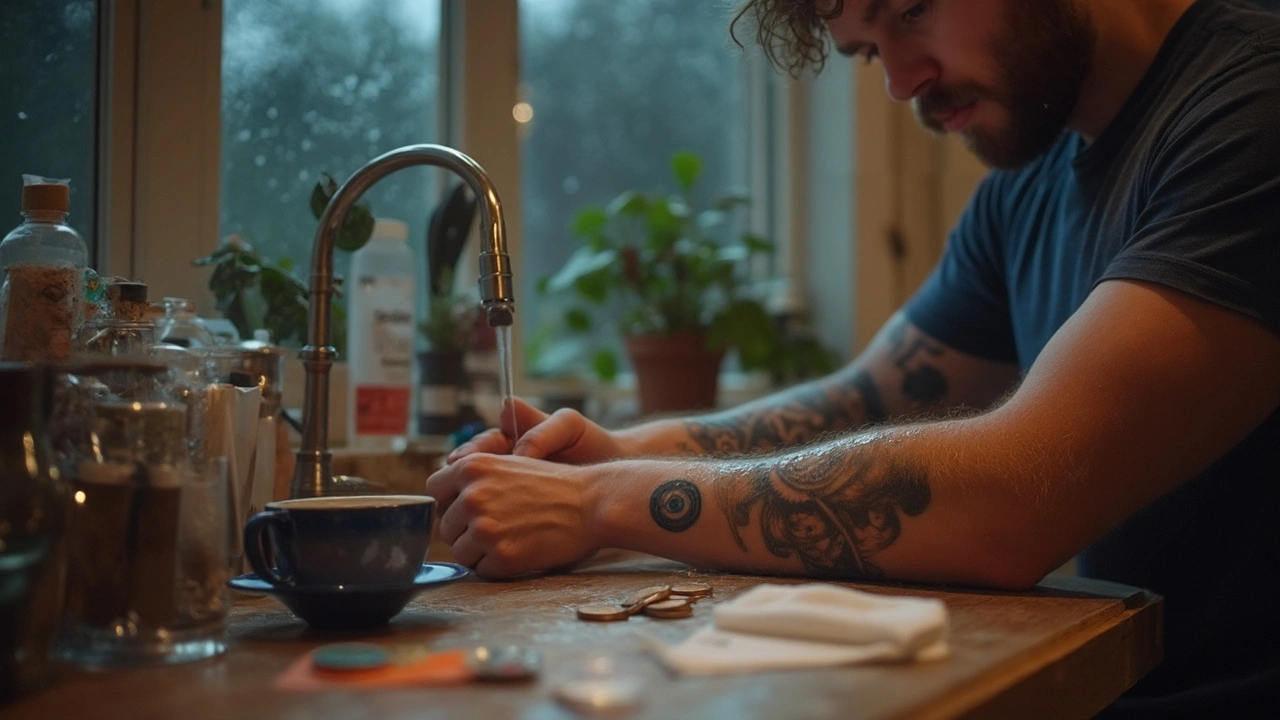
Mini-FAQ and Next Steps
Job: Answer the follow-ups you’re probably thinking about, then give you a clear path forward.
Q: Will an Art Nouveau portrait look like me if it’s stylized?
A: It can be a likeness or a “muse” in that era’s style. Decide upfront: a faithful portrait needs enough size for the facial planes. A stylized muse can be smaller. Either way, keep hair and halo doing the heavy lifting of the design.
Q: Black and grey or color?
A: Both work. Black and grey with strong line hierarchy ages very well and fits every skin tone. Color adds period authenticity and drama. If you live under harsh sun or have a job outdoors, consider a mostly monochrome piece with targeted color pops (halo, petals).
Q: Pain and sessions?
A: Ribs and sternum win the pain trophy; outer upper arm and calves are friendlier. Long sessions (4+ hours) are common for framed pieces. Eat, hydrate, and bring snacks. I tell clients-and my son Orlando when he asked-don’t lift heavy the day before ribs or back; muscle soreness makes it worse.
Q: How do I stop it from looking dated or cheesy?
A: Avoid trend add-ons that aren’t period. Keep the frame and typography era-true. If you include text, research period type-think high-contrast, graceful serifs rather than chunky block fonts. The V&A catalog and Mucha Foundation materials are good references to show your artist.
Q: Will fine lines blur?
A: All lines soften. That’s skin. Control it with line hierarchy, smart placement, and realistic scale. Areas with lots of motion (wrists, fingers) demand thicker minimum lines. Ask your artist to show healed fine-line examples.
Q: What about allergies or ink safety?
A: Share any pigment allergies and ask for ingredient sheets (MSDS). Reputable studios track batches and sterilization. In Australia, studios follow state health guidelines for infection control. You should see single-use needles opened in front of you and clean, wrapped machines.
Q: Can I combine Art Nouveau with another style?
A: Yes, but set one as the boss. For example, a Neo-traditional color build with Nouveau frames can sing. Deco geometry with Nouveau curves often clashes. Decide on the rules of your piece and stick to them.
Next steps (a simple plan you can follow this week):
- Collect 5-7 references: two era artworks (Mucha or Beardsley), two botanicals you can name, one frame or doorway you love, and one modern tattoo with healed photos.
- Take three phone selfies of the body area-front, side, natural light. Print them. Sketch the main S-curve with a marker to learn the flow.
- Shortlist 3 artists who show real Nouveau fluency. Email clear goals, size, placement, references, and ask about hourly or day rates and schedule.
- Book a consult. Ask about line hierarchy, palette choices for your skin tone, and how they protect detail in high-motion zones.
- Plan timing. Avoid sun-heavy weeks and any ocean holidays right after your session.
Troubleshooting common scenarios:
- “My artist loves watercolor, not lines.” Find someone else for this project or ask them to collaborate with a line-focused artist. Nouveau needs strong line architecture.
- “I only have budget for 3 hours.” Focus on one framed motif, black and grey, with a plan to add color later. Better one complete chapter than three half-finished ones.
- “I’m anxious about pain on ribs.” Move the design to outer thigh or upper arm; keep the curves; redo the frame to suit the new canvas.
- “My skin is very freckled.” Lean into contrast: bold outlines, stronger shadow shapes. Freckles can harmonize with stipple shading and look right at home.
If you want the short version? Pick one motif you love, wrap it in an S-curve that fits your body, give it a frame, and choose an artist who’s fluent in the language of 1890-1910. Protect it from the sun, and it’ll still turn heads decades from now-like a Mucha poster that went for a seaside holiday and never left.

